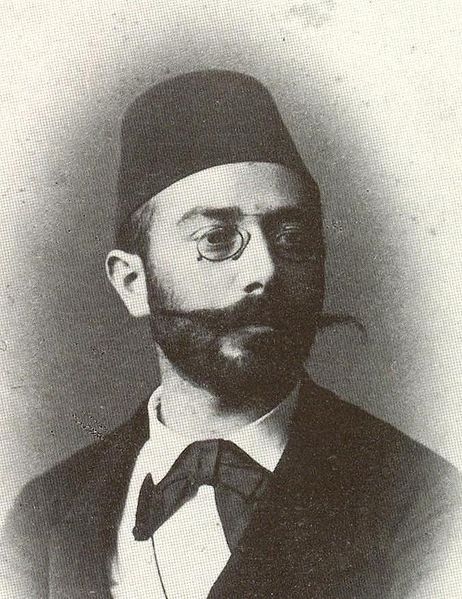Eduard Glaser was an Austrian Arabist and archaeologist. He was one of the first Europeans to explore South Arabia. He collected thousands of inscriptions in Yemen that are today held by the Kunsthistorisches Museum in Vienna, Austria.
Eduard Glaser.
Sabaic, sometimes referred to as Sabaean, was an Old South Arabian language that was spoken between c. 1000 BC and the 6th century AD by the Sabaeans. It was used as a written language by some other peoples of the ancient civilization of South Arabia, including the Ḥimyarites, Ḥashidites, Ṣirwāḥites, Humlanites, Ghaymānites, and Radmānites. Sabaic belongs to the South Arabian Semitic branch of the Afroasiatic language family. Sabaic is distinguished from the other members of the Old South Arabian group by its use of h to mark the third person and as a causative prefix; all of the other languages use s1 in those cases. Therefore, Sabaic is called an h-language and the others s-languages. Numerous other Sabaic inscriptions have also been found dating back to the Sabean colonization of Africa.

Votive stele with Sabaic inscription addressed to the main Sabaean deity Almaqah, mentioning five other South Arabian gods, two reigning sovereigns and two governors: "Ammī'amar son of Ma'dīkarib dedicated to Almaqah Ra'suhumū. With 'Athtar, with Almaqah, with dhāt-Ḥimyam, with dhât-Ba'dân, with Waddum, with Karib'īl, with Sumhu'alī, with 'Ammīrayam and with Yadhrahmalik." Alabaster, c. 700 BC, Yemen, area of Ma'rib (?).
Bronze plaque, written in Sabaic. A dedication from Rabibum Yakhdaf 𐩧𐩨𐩨𐩣 𐩡 𐩺𐩭𐩳𐩰
Ancient stone slabs with Sabaic inscriptions found at Yeha, Ethiopia




